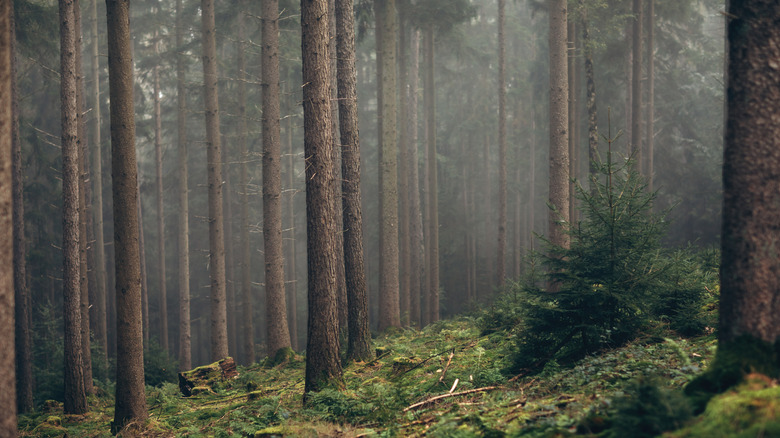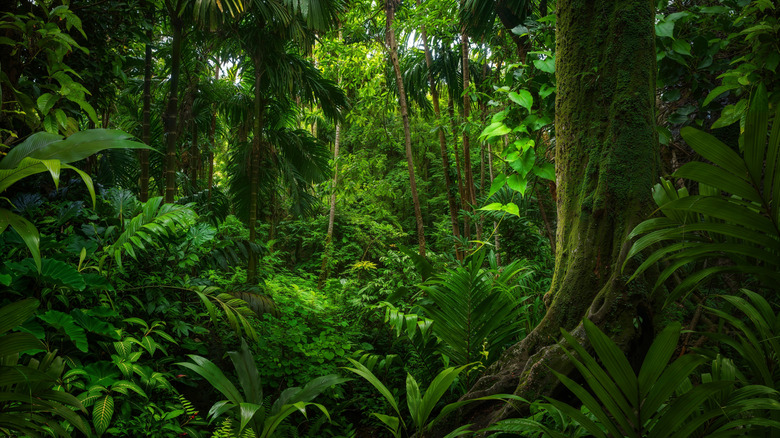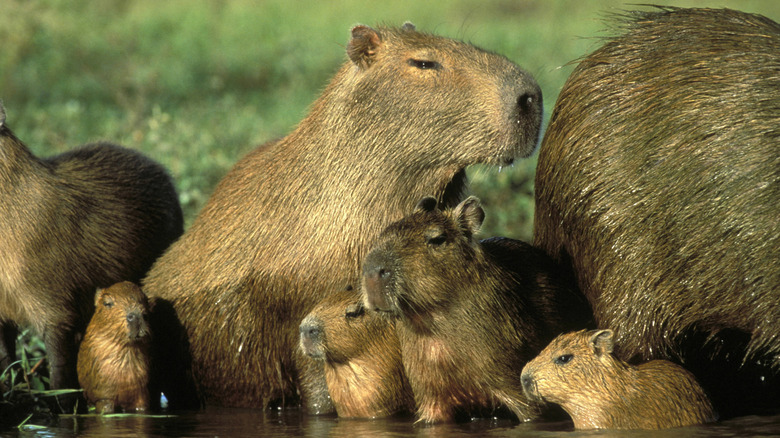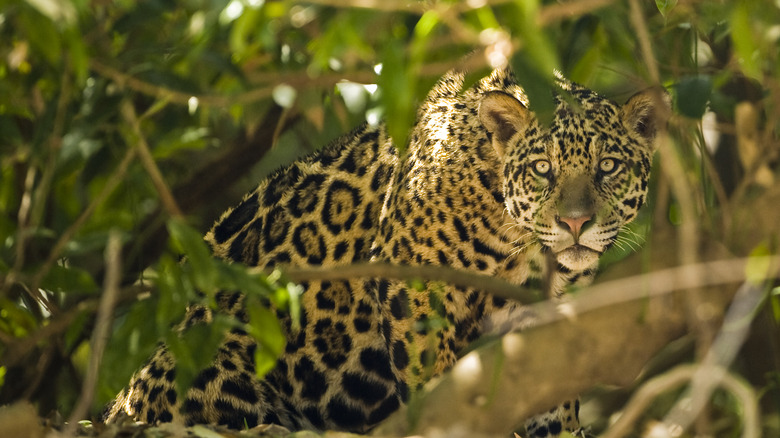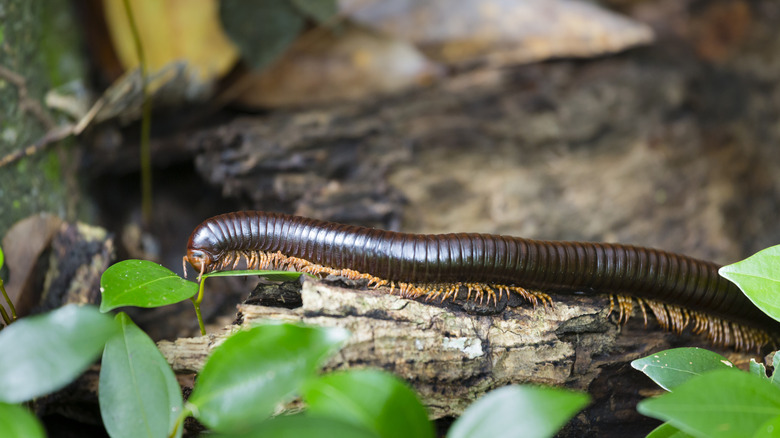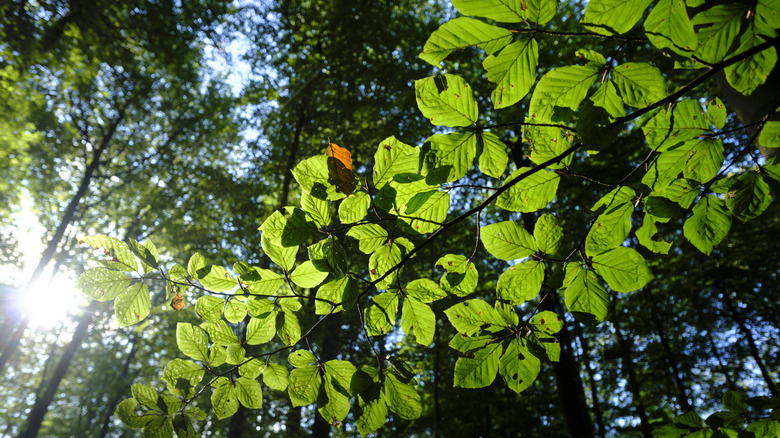Information About A Forest Ecosystem
A forest ecosystem describes the community of plants, animals, microbes, and all other organisms in interaction with the chemical and physical features of their environment: Specifically, a terrestrial environment dominated by trees growing in a closed canopy — a forest, in other words.
The organisms involved in a forest ecosystem definition are interdependent on one another for survival and can be broadly classified according to their ecological role as producers, consumers, and decomposers. To describe forest ecosystem dynamics, you can a well-known example of such an ecosystem as your model: the Amazon rainforest of South America.
Forest producers
Let's start your look at forest ecology where energy from the sun enters the system: at the producer level, made up of organisms that can manufacture their own energy from this solar input. Green plants conducting photosynthesis serve as the producers of a forest ecosystem, and in the tropical rainforest of the Amazon, they typically arrange themselves in four layers.
The emergent layer includes huge trees towering 165 feet or more that are spaced far apart. Beneath these emergent trees lies the main canopy, composed of closely spaced trees generally 65 to 165 feet tall. They provide fruits, nectar, and seeds for many creatures. The understory supports few plants as it receives very little sunlight. Almost nothing grows on the forest floor as it is devoid of sunlight.
Primary consumers
Primary consumers can't manufacture their own energy and instead obtain it by eating green plants. Scientists call such plant-eating animals herbivores. Herbivores may eat a wide variety of different plant materials depending on their physical adaptations and habitat preferences.
In the Amazon, a semi-aquatic rodent known as a capybara forages on the forest floor and in wetlands for grasses and water plants. Other primary consumers, such as the red howler monkey, live in the rainforest canopy and feed on the leaves, flowers, fruits, and nuts of trees.
Secondary and tertiary consumers
Secondary consumers feed on primary consumers (aka herbivores) to obtain the energy originally produced by green plants, while tertiary consumers feed on other secondary consumers. These meat-eating animals are known as carnivores, and many act both as secondary and tertiary consumers depending on the creature they're preying on. The jaguar — the biggest mammalian carnivore in the Amazon — may prey on capybaras, a primary consumer, but also readily hunts such secondary consumers as caimans, in which case, as a carnivore eating a carnivore, it plays the role of a tertiary consumer.
Some secondary and tertiary consumers mix up an animal diet with plant matter. For example, the golden lion tamarin, a small monkey, will eat both fruits as well as insects and frogs. Such consumers are known as omnivores.
Predators thrive in all the layers of the Amazon rainforest. Ocelots and jaguars hunt for mammals, reptiles, and birds on the forest floor and understory. Harpy eagles and the green snakes called emerald tree boas prey on birds, lizards, and mammals for food.
Forest decomposers
The decomposers of the forest ecosystem break down dead plants and animals, returning the nutrients to the soil to be made usable by the producers. Apart from bacteria, ants and termites are important decomposers in the Amazon rainforest. Millipedes and earthworms also help to break down dead matter. The warm and moist climate of the Amazon is conducive for the decomposers to work at a rapid pace: Dead matter is broken down within six weeks.
Interdependence and symbiosis: foundations of forest ecology
The organisms of this ecosystem are interdependent on each other for survival. An example in this regard is the relationship between Azteca ants and cecropia trees. The ants, which thrive in the hollow stems of the trees, depend on the special juice produced by the trees for food. In exchange, the ants chase away the insects that may harm the ceropias and kill the climbing vines that might choke these trees. This sort of close, interactive relationship between two organisms is an example of symbiosis.
Another example of a symbiotic relationship is the one between ants and caterpillars. The ants feed on sweet juices produced by spots on the caterpillars' back. In return, they protect the caterpillars from attack.
